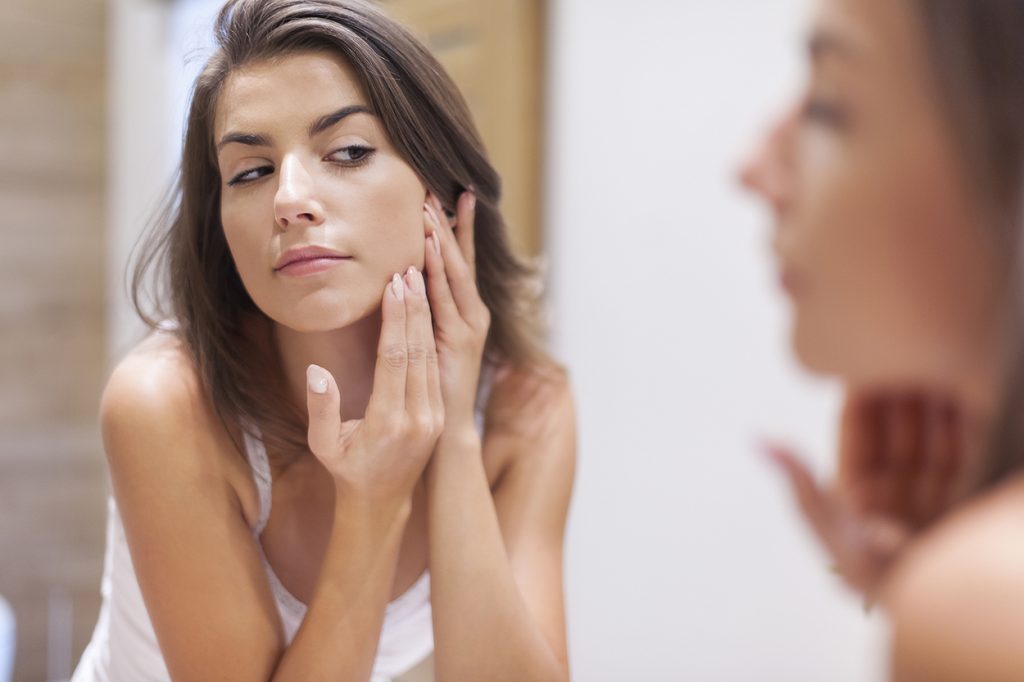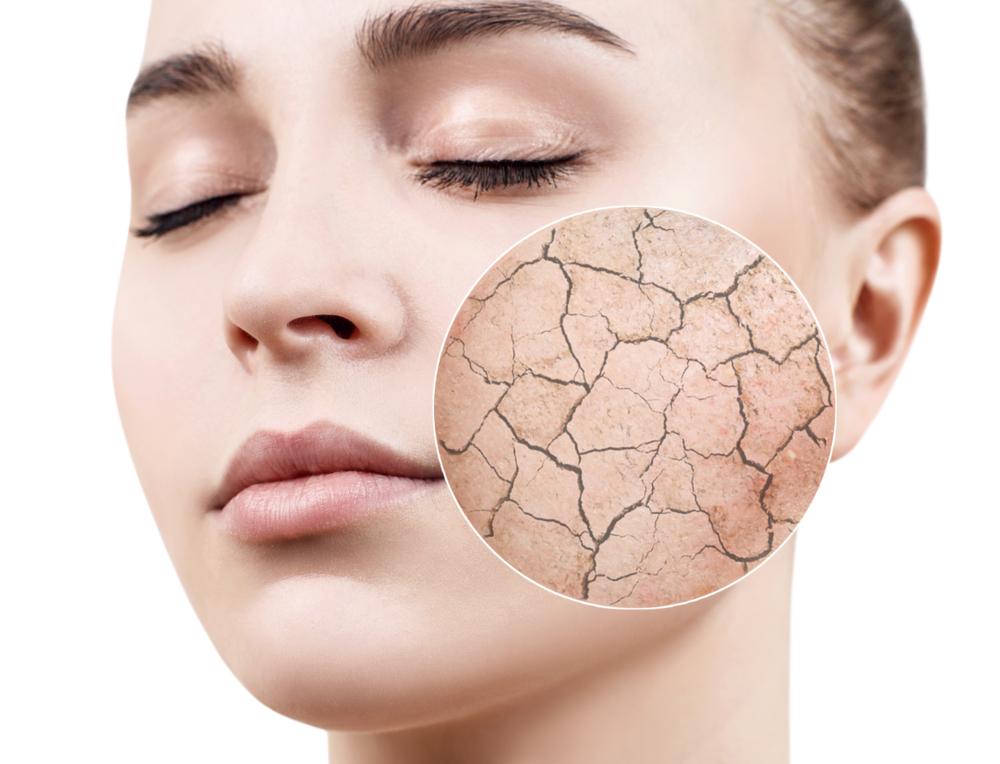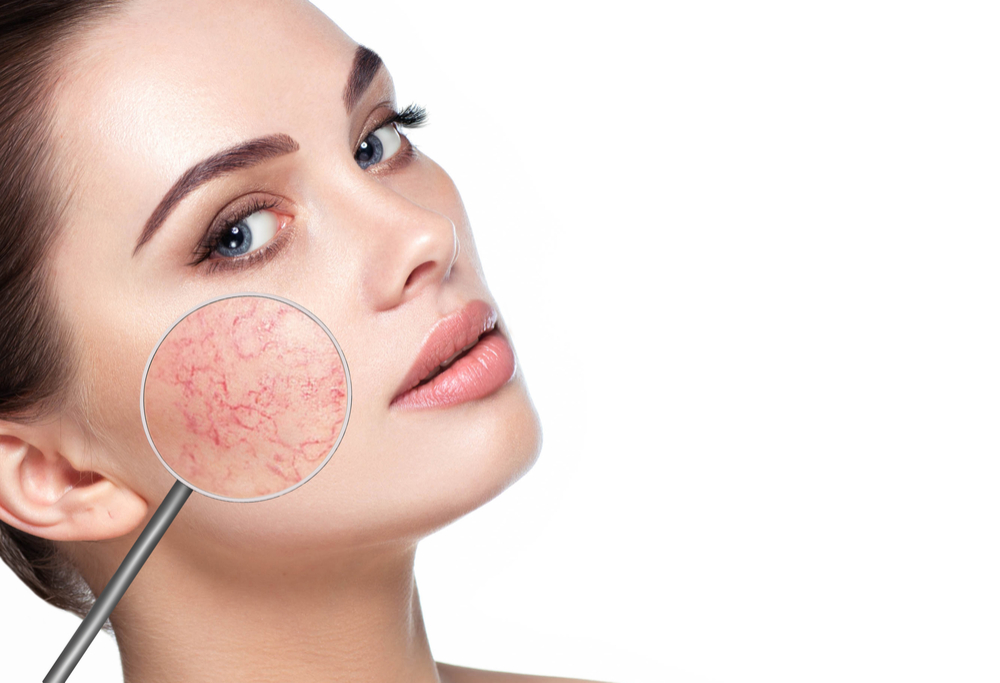Different skin types and acne
Oily skin

Mixed skin

Most people have mixed skin, with a higher density of pores around the T-zone, which includes the forehead, nose and chin. The T-zone can be oily, while the peripheral areas of the face (cheeks) are usually dry. Therefore, the skin is mixed. The overall oiliness/dryness of the skin depends on our hereditary genes and controlled by hormone levels, both factors are the leading causes of acne.
Dry skin

If your skin feels stretched after taking a shower or after a regular face wash, if you notice small wrinkles or flakiness, you probably suffer from dehydrated skin. For most people with dark skin-tone, dry skin can appear greyish due to dead skin cells accumulating on the top skin layer. Dry skin can absolutely develop acne breakouts. It is common especially for women going through menopause, where acne is caused by easily clogged pores.
Mild peel of the skin can help remove dead skin cells that clog pores, however, it is important not to overdue and dry the skin further. If the skin’s natural oil-protecting layer is damaged, the skin will produce more and more oil to fight the dryness. Yet, the presence of dead skin cells would prevent the natural oil from moisturizing the skin. This situation is the perfect platform for an acne breakout.
Sensitive skin and Rosacea

Sensitive skin
The definition of sensitive skin is skin that has a visible physical reaction such as redness, irritation, a tingling feeling or a burning sensation when using certain cosmetic products. In addition, the irritation caused can be accompanied by rough or dry areas on the face or neck.
Many believe they have sensitive skin, although they have normal skin without a specific sensitivity. Your own sensitivity to a product could be tested by applying a small amount of product onto your neck twice a day, for a few days. If there is no significant reaction such as redness or itching, you can begin using the product on the face. You may start the use once or twice a day and then increase or decrease according to your skin tolerance.
There are two major reasons for sensitive skin- genetic inclination and environmental factors. Overuse of different cosmetic product in your daily routine can harm the natural skin protecting barrier and lead to irritation. People with eczema or rosacea have a pre-dispositioned inclination to develop irritation when using a certain cosmetic product.
Rosacea
A chronic skin condition that typically affects the face yet can be extended to the neck and chest area. It results in redness, pimples, swelling, and small and superficial dilated blood vessels. The cause of rosacea is unknown and mostly effects women after the age of 30. Risk factors are believed to include a family history of the condition. Factors that may potentially worsen the condition include heat, exercise, sunlight, cold weather, spicy food, alcohol, menopause, psychological stress, or use of steroid cream. People with light skin-tone tend to suffer from the condition more often the people with dark skin-tone.
Rosacea is not acne, it is not cause by the same factors as acne, such as excess sebum secretion. Although, at times, rosacea can cause red spots on the cheeks and nose along with a flushed complexion.
In some cases, the flushed complexion derived from rosacea and acne spots can be simultaneous.
Rosacea is best to be treated by a dermatologist, since products that treat rosacea are not sold OTC. Studies have shown that laser treatments can help reduce blood vessels appearance on the face. Most people can avoid rosacea sings by avoiding exposure to strong sunlight, spicy food and wine. The triggers for the rosacea are different for each person, so one could only find them by trial and error.
Similarly to acne, people suffering from rosacea have emotional distress including embarrassment and frustration about their condition. Although, getting treatment for the condition from a dermatologist can help manage the symptoms.
